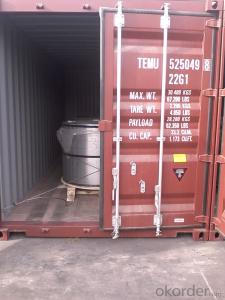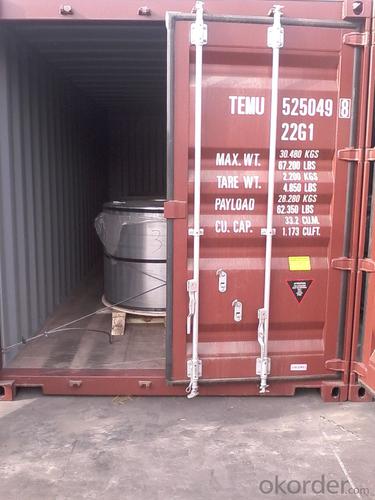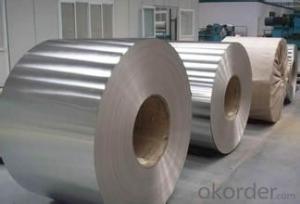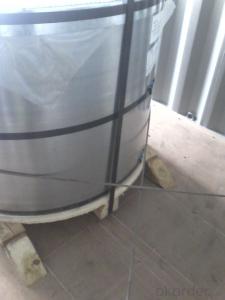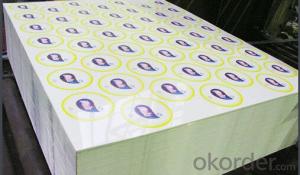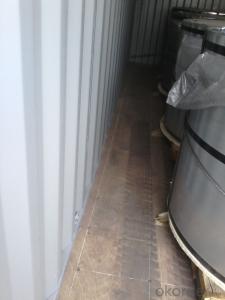Prime Good Quality ETP Tinplate for Tin Cans Container
- Loading Port:
- China Main Port
- Payment Terms:
- TT OR LC
- Min Order Qty:
- -
- Supply Capability:
- -
OKorder Service Pledge
OKorder Financial Service
You Might Also Like
Tinplate is a thin steel sheet coated by tin. It has an extremely beautiful metallic luster as well as excellent properties in corrosion resistance, solder ability, and weld ability.
We have been producing tinplate material professionally and providing related service for decades years. Now we have been exporting our material to the world. Please kindly contact us to meet your needs for ETP materail.
Below is the specification we currently do:
1. Standard: GB/T 2520-2000, JIS G3303-2002 and DIN EN 10203-1991
2. Raw material: MR, SPCC
3.Thickness: 0.18 to 0.50mm
4. Width: 260 to 980mm
5. Coil diameter: ID 420mm or 508mm
6. Temper grade: T2, T3 and T4
7. Tin coating: ordinary 2.8 or 2.8g and 5.6g or 5.6g, can produce according to customer's requests
8. Applications: paint, chemical and other usage can make battery, electric cable and other industries
9. Package: anti-rust paper, corner protected. Sheets or coils according customer's request.
Both Prime and Second Quality Are Available!!!
- Q: What are the common opening mechanisms for tinplate containers?
- The common opening mechanisms for tinplate containers include pull-tab lids, twist-off caps, and pry-off lids.
- Q: What are the different coating weights available for tinplate?
- The different coating weights available for tinplate typically range from 1.1 to 11.2 grams per square meter (g/m²).
- Q: What are the considerations for handling and storing tinplate coils?
- There are several considerations for handling and storing tinplate coils. Firstly, it is important to handle the coils with care to prevent any damage or deformation. This includes using appropriate lifting equipment, avoiding dropping or dragging the coils, and ensuring a smooth and controlled transfer process. Secondly, the storage environment should be suitable for tinplate coils. They should be stored in a clean, dry, and well-ventilated area to prevent corrosion and rusting. It is recommended to keep the coils away from direct sunlight, extreme temperatures, and moisture. Additionally, proper stacking and organization of the coils is crucial. They should be stacked on flat and stable surfaces, with adequate support and spacing between each coil. Labeling the coils with relevant information such as date of manufacture, size, and grade can aid in efficient inventory management. Lastly, regular inspections should be conducted to identify any potential issues or defects. This includes checking for any signs of corrosion, dents, or scratches that may have occurred during handling or storage. Prompt action should be taken to address any problems to ensure the quality and integrity of the tinplate coils.
- Q: Can tinplate be used for packaging household cleaning products?
- Yes, tinplate can be used for packaging household cleaning products. Tinplate is a durable and corrosion-resistant material that provides excellent protection and preservation for various types of products, including household cleaning solutions. It is commonly used in the manufacturing of cans and containers for packaging cleaning products due to its strength, versatility, and ability to maintain product quality.
- Q: What are the food safety regulations for tinplate packaging?
- The food safety regulations for tinplate packaging vary depending on the country and region. However, in general, tinplate packaging must meet certain standards to ensure the safety of the food inside. These standards typically include requirements for the quality of the tinplate material, such as being free from contaminants and durable enough to prevent leaks or damage. Additionally, regulations may cover aspects like the use of food-grade coatings on the tinplate, proper labeling and identification of the packaging, and compliance with hygiene and sanitation practices during the manufacturing process.
- Q: How is tinplate used in the confectionery industry?
- Tinplate is commonly used in the confectionery industry for packaging purposes. It provides a protective and airtight barrier, ensuring the freshness and quality of confectionery products. Tinplate cans or containers are often used for storing chocolates, candies, and other sweets, keeping them safe from moisture, light, and external contaminants. Additionally, tinplate's versatility allows for attractive and customizable designs, enhancing the visual appeal of confectionery packaging.
- Q: What are the advantages of using tinplate for furniture?
- One advantage of using tinplate for furniture is its durability. Tinplate is known for its strength and resistance to corrosion, making it a long-lasting material for furniture. Additionally, tinplate is also lightweight, making it easy to move and rearrange furniture as needed. Moreover, tinplate can be easily molded into various shapes and designs, allowing for versatile and customizable furniture options. Lastly, tinplate is a cost-effective choice, as it is typically less expensive than other materials commonly used for furniture production.
- Q: What are the advantages of using tinplate for household appliances?
- There are several advantages of using tinplate for household appliances. Firstly, tinplate is highly resistant to corrosion, making it ideal for appliances that come in contact with water or other liquids. This corrosion resistance ensures the longevity of the appliance, reducing the need for frequent replacements. Secondly, tinplate has excellent heat resistance properties, making it suitable for appliances that generate high temperatures. This heat resistance allows for efficient heat transfer and prevents warping or damage to the appliance. Additionally, tinplate is lightweight yet sturdy, making it easy to handle and transport while maintaining durability. Lastly, tinplate is a sustainable material as it is 100% recyclable, reducing environmental impact and promoting a circular economy.
- Q: How does tinplate perform in terms of light blocking properties?
- Tinplate has excellent light blocking properties due to its opaque nature, making it an effective material for preserving the quality and freshness of light-sensitive products.
- Q: Can tinplate be used for coffee or tea packaging?
- Yes, tinplate can be used for coffee or tea packaging. Tinplate is a durable and food-safe material that provides excellent protection against moisture, light, and oxygen, making it an ideal choice for preserving the quality and freshness of coffee or tea. Additionally, tinplate can be easily shaped and printed on, allowing for attractive and customized packaging designs.
Send your message to us
Prime Good Quality ETP Tinplate for Tin Cans Container
- Loading Port:
- China Main Port
- Payment Terms:
- TT OR LC
- Min Order Qty:
- -
- Supply Capability:
- -
OKorder Service Pledge
OKorder Financial Service
Similar products
Hot products
Hot Searches
Related keywords
